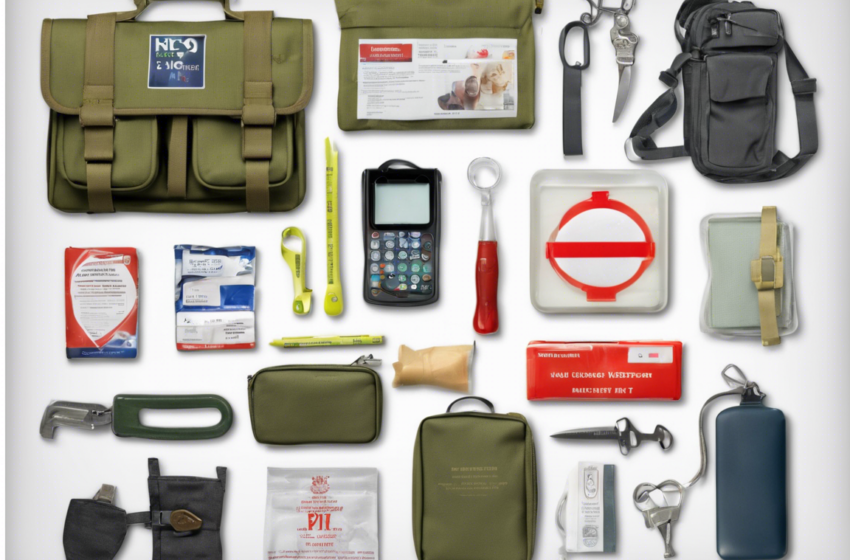UK Government Emergency Kit: Be Prepared!

Every year, the United Kingdom faces various types of emergencies ranging from natural disasters to man-made incidents. With the ever-present threat of public safety issues, it is crucial for individuals and families to be prepared for any eventuality. The UK Government recommends that every household should have an Emergency Kit ready at all times. This kit should contain essential items that can help you and your loved ones in case of an emergency. In this article, we will delve into what should go into a UK Government Emergency Kit and why it is important to have one.
Importance of an Emergency Kit
Emergencies can happen at any time without warning. They can disrupt basic services such as electricity, water, and communication networks. During such times, emergency services may be overwhelmed, and it might take some time for help to arrive. Having an Emergency Kit ready can make a significant difference in your ability to cope with these situations. It can provide you with basic necessities, first aid supplies, and tools to help you survive until help arrives.
What to Include in a UK Government Emergency Kit
Food and Water
- Non-perishable food items: Include canned food, protein bars, dried fruits, and nuts.
- Water: Store at least 3 liters of water per person, per day for a minimum of three days.
First Aid Kit
- Bandages, plasters, and antiseptic wipes: Essential for treating minor injuries.
- Prescription medication: Include a 3-day supply of any essential medications.
- Pain relief medication: Such as paracetamol and ibuprofen.
- First aid manual: To guide you in treating minor injuries.
Emergency Supplies
- Flashlight with extra batteries: Essential for providing light during power outages.
- Whistle: To attract attention in case of emergency.
- Multi-tool: Such as a Swiss Army knife for various uses.
- Masking tape and plastic sheeting: Useful for sheltering in place during emergencies.
Clothing and Bedding
- Warm clothing: Include jackets, hats, gloves, and socks.
- Blankets or sleeping bags: To keep warm during cold weather.
Personal Hygiene Items
- Toothbrush and toothpaste
- Hand sanitizer
- Feminine hygiene products
- Wet wipes
Important Documents
- Copy of identification: Passport, driver’s license, or ID card.
- Insurance documents
- Emergency contact list
- Cash: In small denominations.
Additional Considerations
It is important to regularly check and update your Emergency Kit. Make sure to:
– Check expiry dates of food, water, and medications.
– Rotate supplies: Use and replace items periodically to ensure freshness.
– Customize: Consider any unique needs of your family members such as infants, elderly, or pets.
– Inform family members: Ensure that everyone in your household knows the location of the kit.
Frequently Asked Questions (FAQs)
- How often should I update my Emergency Kit?
-
It is recommended to check and update your kit every six months. Replace expired items and ensure that all supplies are in good condition.
-
Do I need to store my Emergency Kit in a specific location?
-
Store your kit in an easily accessible location that is known to all household members. Ensure that it is in a waterproof and sturdy container.
-
Should I include personal documents in the Emergency Kit?
-
Yes, it is important to include copies of essential documents such as IDs, insurance papers, and emergency contacts. Consider storing them in a waterproof pouch.
-
Can I buy a pre-made Emergency Kit?
-
While pre-made kits are available for purchase, it is recommended to customize your kit based on your family’s specific needs and preferences.
-
How can I involve my children in emergency preparedness?
-
Teach your children about the contents of the Emergency Kit and why it is important to be prepared. Involve them in creating their own mini kits with items like snacks, a flashlight, and a small toy.
-
What should I do if I run out of supplies in my kit during an emergency?
- If you run out of supplies in your Emergency Kit, prioritize essential items like water, food, and first aid supplies. Consider rationing and sharing resources with other households if necessary.
Having a well-equipped Emergency Kit is not just a recommendation but a necessity in today’s unpredictable world. In times of crisis, being prepared can make all the difference in ensuring the safety and well-being of yourself and your loved ones. Take the time to assemble your kit today and be ready for whatever challenges may come your way.